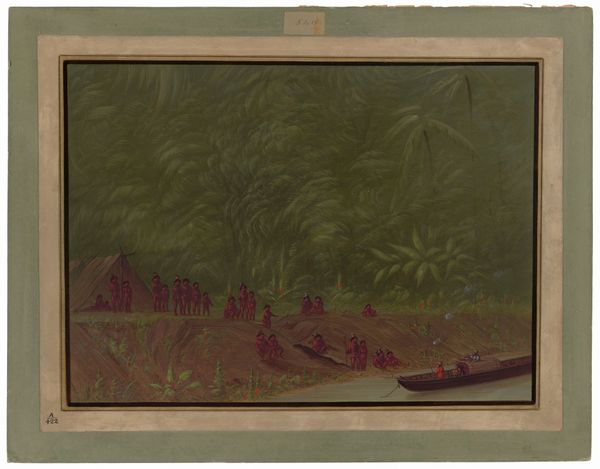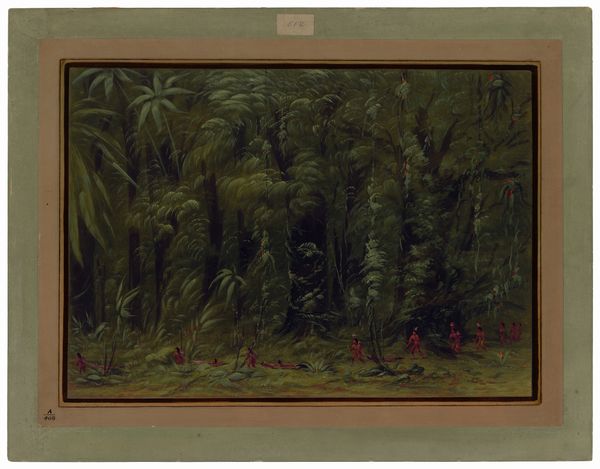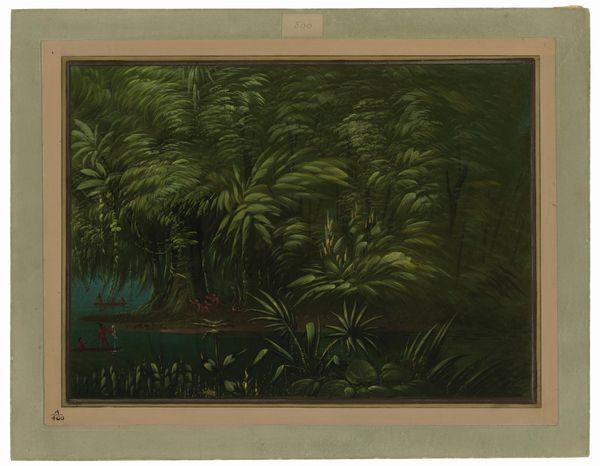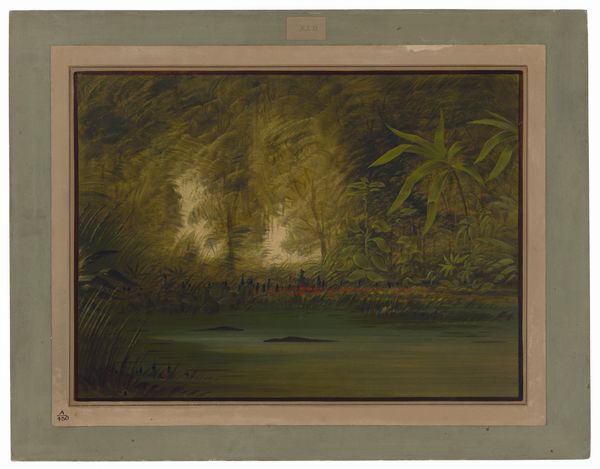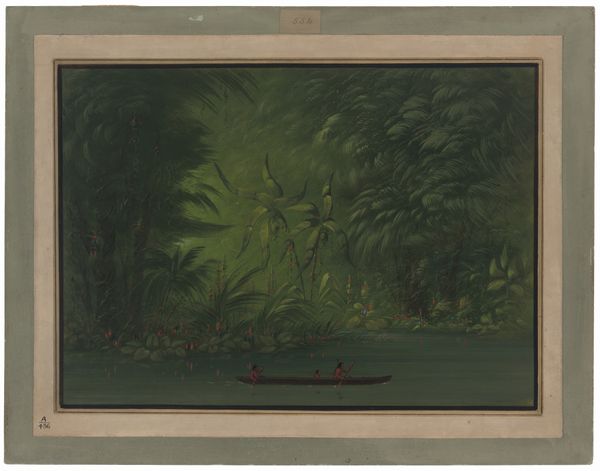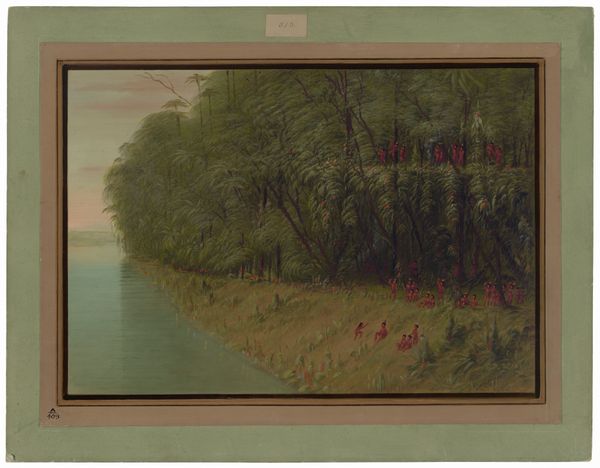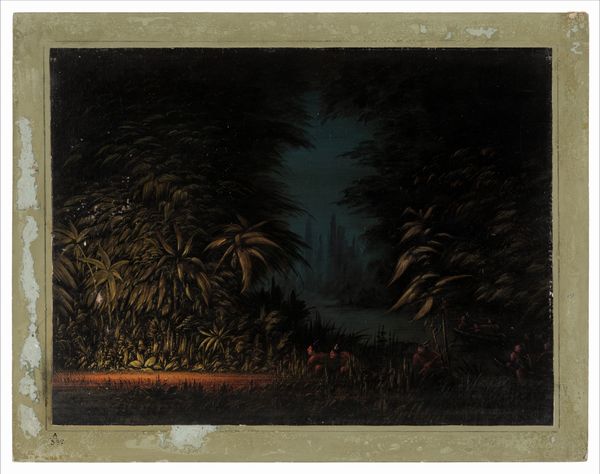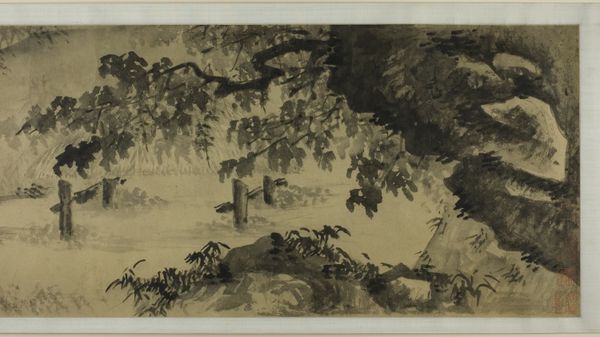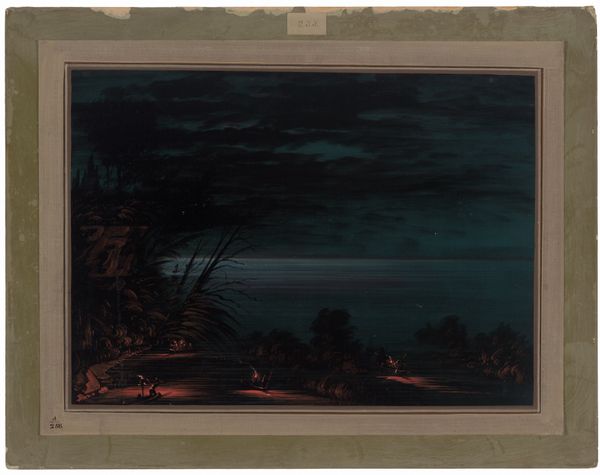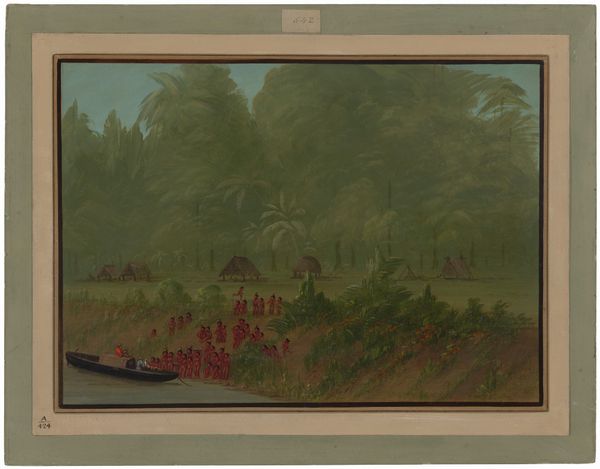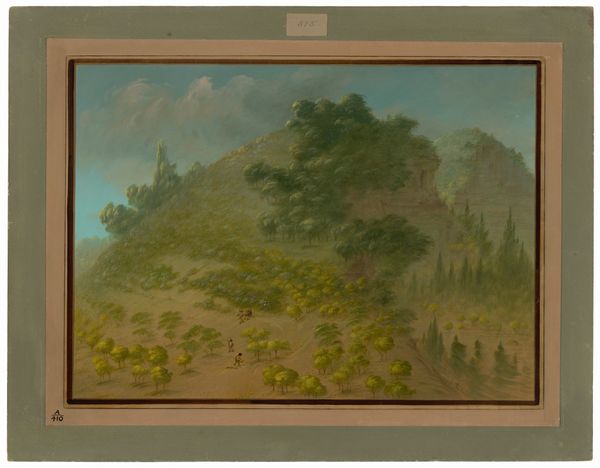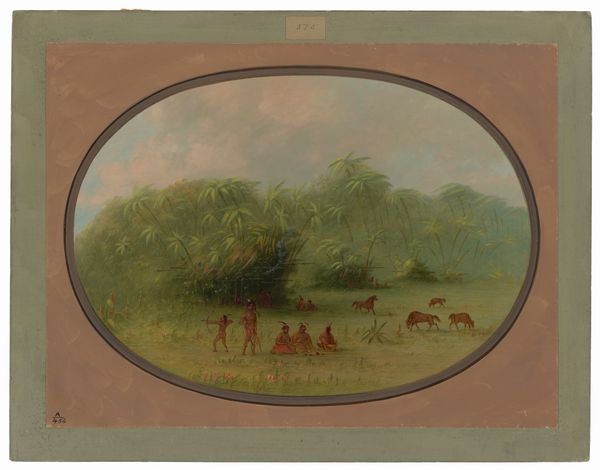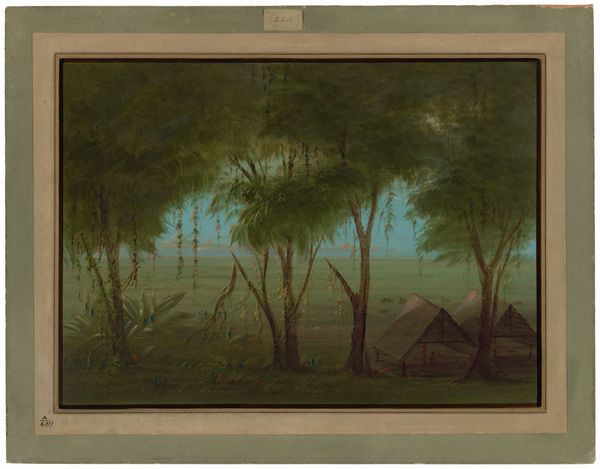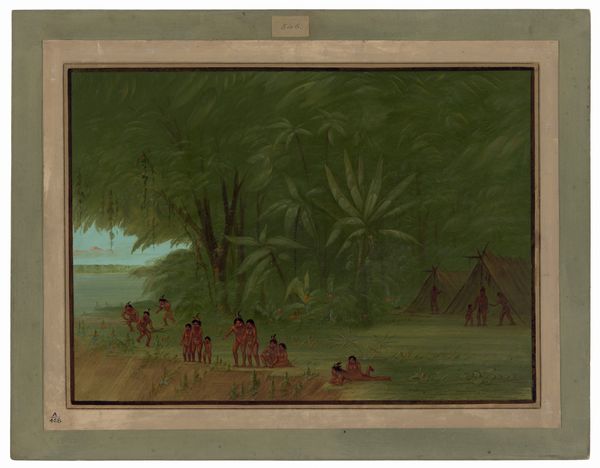
painting, gouache
#
water colours
#
painting
#
gouache
#
landscape
Dimensions: overall: 47.5 x 62.8 cm (18 11/16 x 24 3/4 in.)
Copyright: National Gallery of Art: CC0 1.0
Curator: Here we have George Catlin’s, "Indian Camp in the Forest," painted sometime between 1854 and 1869, rendered with watercolors. It’s a deceptively simple composition. What are your immediate thoughts? Editor: It’s strikingly…lush, isn't it? Dense greenery almost swallowing the small figures and tents in the foreground. I’m drawn to how muted the colors are; it feels like looking back through time, a slightly faded memory. Curator: Precisely. Catlin was deeply invested in documenting Indigenous life, which he believed was rapidly vanishing due to Western expansion. Works like this highlight not only the camp, but their place in these landscapes and it hints at his concerns about cultural preservation. Editor: I’m intrigued by the tents themselves. Were these materials readily available? I wonder about the labor involved in their construction, the communal effort of building shelter with what the environment offered. Curator: The hide tents were integral. Catlin presented such images in traveling exhibitions where he attempted to advocate the rights of the peoples whose portraits and customs he was putting on display. Editor: There's something disquieting about that role, isn't there? He's an observer, and ultimately, a communicator of a culture being consumed by his own. Was there ever true reciprocity, or was this documentation simply another form of extraction? Curator: It's a deeply troubling aspect of his project, and of so many similar endeavors in the 19th century. His intentions may have been partly preservationist, but the underlying power dynamic is undeniable. He could display them however he wished. Editor: And how much did that distort or reframe what he saw? Was he capturing life as it was lived, or presenting a romanticized version palatable to his audience, reinforcing existing stereotypes? Curator: It is something to consider. Viewing them from a contemporary standpoint requires recognizing both the artistic skill and the ethical complexity. Editor: Indeed, recognizing that the materials, the image, the whole endeavor carries that weight of history and its production. A reminder that even something as seemingly gentle as a watercolor holds layers of socio-political force. Curator: I think you have provided valuable insights, and offered important angles from which to examine this interesting watercolor work. Thank you. Editor: My pleasure; the image is both captivating and challenging in the questions it raises.
Comments
No comments
Be the first to comment and join the conversation on the ultimate creative platform.
